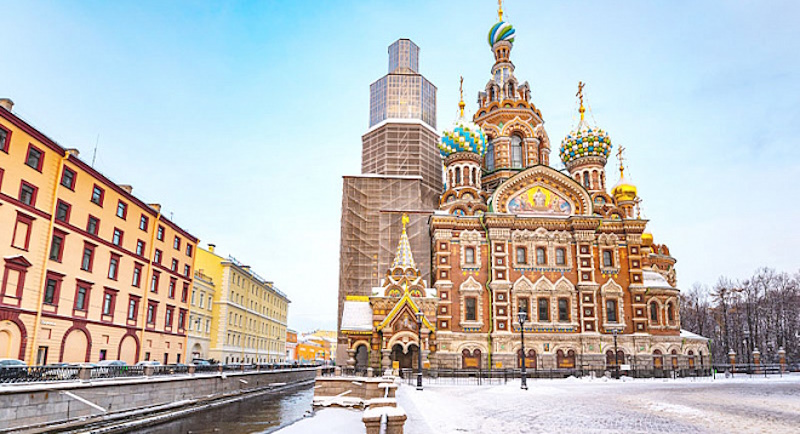The city where the sky reflects in the rivers, and bridges lead not just across the Neva, but through centuries, can speak to everyone — in its own, special language of feelings. It is precisely a walking tour of the center St Petersburg that allows you to not just see it, but to feel it — with your skin, hearing, smell, taste, and, of course, your eyes. Let’s try to understand how St. Petersburg unfolds during a guided walk through its very center.
Sound: Music, Silence, and the Echoes of Centuries
St. Petersburg is not silent. It sings, whispers, hums, and rings. And every corner of it sounds unique.
What can you hear while walking through the center?
- The ringing of bells — above the rooftops of the Church of the Savior on Spilled Blood or St. Isaac’s Cathedral, these sounds seem to transport you back to the 19th century.
- The murmur of the Neva River — especially in spring, when the ice drift breaks the river into fragments of the past, present, and future.
- The chirping of seagulls and the cawing of crows on the Palace Embankment, intertwined with the hum of human voices and the noise of passing cars.
- Street musicians on Malaya Sadovaya Street, Gostiny Dvor, in archways and by the canals — from violins to ethnic drums, from jazz to Shostakovich.
- The echo of footsteps in deserted courtyard wells, as if the city whispers: «You are not alone.»
This musical landscape creates a backdrop against which every story told by the guide comes to life.
Scents of the City: Between Coffee, Rain, and Summer Breeze
Your nose won’t deceive you. It’s the first to catch the change in the street’s mood, the shift in the neighborhood, the time of day, or the season.
What does St. Petersburg smell like?
- Freshly ground coffee — from small coffee shops on the corner, the aroma trails behind passersby like a morning dream.
- Wet granite after the rain — tart, stony, with a hint of city moisture and history.
- Fresh croissants and pastries — street baked goods delight not only the hungry tourist but also the casual passerby.
- Floral notes — in summer, flowerbeds, balconies, and flower shops turn the air into a living bouquet.
- The river breeze from the Neva — slightly salty, cool, and persistent, like the city itself.
St. Petersburg smells like an old library with notes of marzipan and damp watercolors. It doesn’t just absorb aromas — it speaks through them.
Touch: Touching History with Your Hands
Tactile sensations often go unnoticed. But in vain. St. Petersburg is one of the few cities where you want to stroke the walls.
What can you touch?
- The coldness of the granite embankments — especially in the early morning when dew lies on the railings.
- The roughness of the cobblestones — under your feet, each indentation like a trace from Catherine’s carriage.
- The smoothness of marble columns — in the arches of the General Staff Building or near the Kazan Cathedral — like polished silk.
- Metal fences — ornate, with knots of time, where fingers can wander through centuries-old curls.
- The warm wood of benches — in the Summer Garden or near Nevsky Prospekt, especially on a sunny day.
St. Petersburg says: «Touch me, and I will tell you a story.»
Taste: St. Petersburg on Your Tongue
A walk through the center is not just visual and auditory impressions. It’s the taste of the city — literally.
Where and what to try along the way?
- Pyshechnaya on Bolshaya Konyushennaya Street — пышки (Russian doughnuts) with powdered sugar, like a bridge to childhood.
- A coffee shop in a tenement building — a small latte in a patterned mug, prepared by a barista in a reindeer sweater.
- Oysters on Aptekarsky Island — for gourmets and those who want to feel the Baltic accent of the city.
- Traditional pies — with cabbage, meat, apples — recipes from grandmothers, hidden in bakeries behind modest signs.
- Mors or sbiten — sweet, spicy, warming from the inside, especially in windy weather.
This taste is not just gastronomic; it’s emotional. It’s about a city where even food can be part of the excursion.
Sight: St. Petersburg in Every Frame
And, of course, sight. Without it, the full picture won’t come together. The center of St. Petersburg is like an open-air museum, where every building is an exhibit.
What can you see?
- Facades in the Baroque and Neoclassical styles — from the Winter Palace to the mansions on Millionnaya Street.
- Rivers and canals — golden sunsets over the Fontanka, azure afternoons over the Moika, the mirror-like surface of the Griboyedov Canal.
- Palaces and cathedrals — the colorful domes of the Church of the Savior on Spilled Blood, the grandeur of St. Isaac’s, the строгая (strict) Kazan Cathedral.
- Details — wrought-iron balconies, stucco molding, bas-reliefs, sculptures — those little things that are easy to pass by but hard to forget.
- People — artists, students, painters, grandmothers with dogs — they are part of the St. Petersburg ambiance.
This visual kaleidoscope doesn’t just please the eye. It shapes the image of the city — complex, changeable, majestic.
The Symphony of St. Petersburg: Hear, Touch, Inhale…
St. Petersburg doesn’t reveal itself immediately. It requires time, attention, and, most importantly, feelings. Only then does a walking tour through its streets turn into a true symphony of perception. This city cannot simply be seen — it needs to be listened to, tasted, felt. And only then will it open up — in all its depth.
